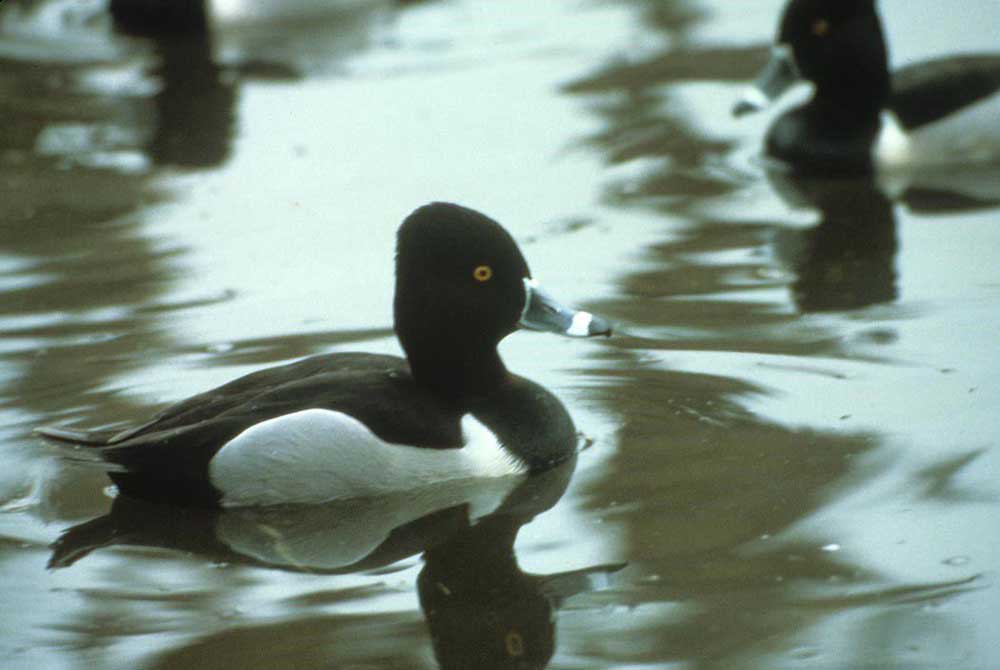These ducks dive for food
Published 12:00 am Wednesday, February 26, 2014

- U.S. Fish and WIldlife Service / Submitted photoThe ring-necked duck makes Central Oregon its winter home.
Ring-necked duck
Scientific name: Aythya collaris
Characteristics: A midsized duck, 14-18 inches in length, bold white ring near tip of bill, bluish-gray bill, and prominent white crescents that separate the black breast from the gray sides. Males have a dark back, upper chest and tail; purple-glossy head that peaks in back; and second white ring at the base of the bill. The female is a variable brown overall and has a dark eye surrounded by a white eye ring and sometimes white eye line.
Range: Widespread across the United States, Mexico and most of Canada at various times of the year.
Breeding: Nests in a depression of vegetation or matted plants over water or along a shoreline. A typical clutch has between eight and 10 olive-tan eggs.
Habitat: Wetlands, lakes, rivers or ponds; may be found in coastal marshes in winter. Migrates and winters throughout Central Oregon, and has nested in some higher elevation lakes in northeastern Oregon.
Food: Dives underwater for seeds, insects, aquatic invertebrates, worms, mollusks and plants.
Bird facts: The male’s dark brown neck ring which gives the bird its common name is barely visible. The species name “collaris” means “collar” and refers to this neck ring. Another common name could have been ring-billed duck in reference to the rings around the bill; in the southeastern U.S. these ducks are called “blackjacks.” A diving duck, these birds feed underwater.
Current viewing: Deschutes River, Hatfield Lakes, agricultural ponds, wetlands and other freshwater areas around the region.
— Damian Fagan is a birder, writer and past President of the East Cascades Audubon Society. He can be reached at damian.fagan@hotmail.com.
Sources: Oregon Department of Wildlife Resources and “The Audubon Society Encyclopedia of North American Birds” by John Terres.








